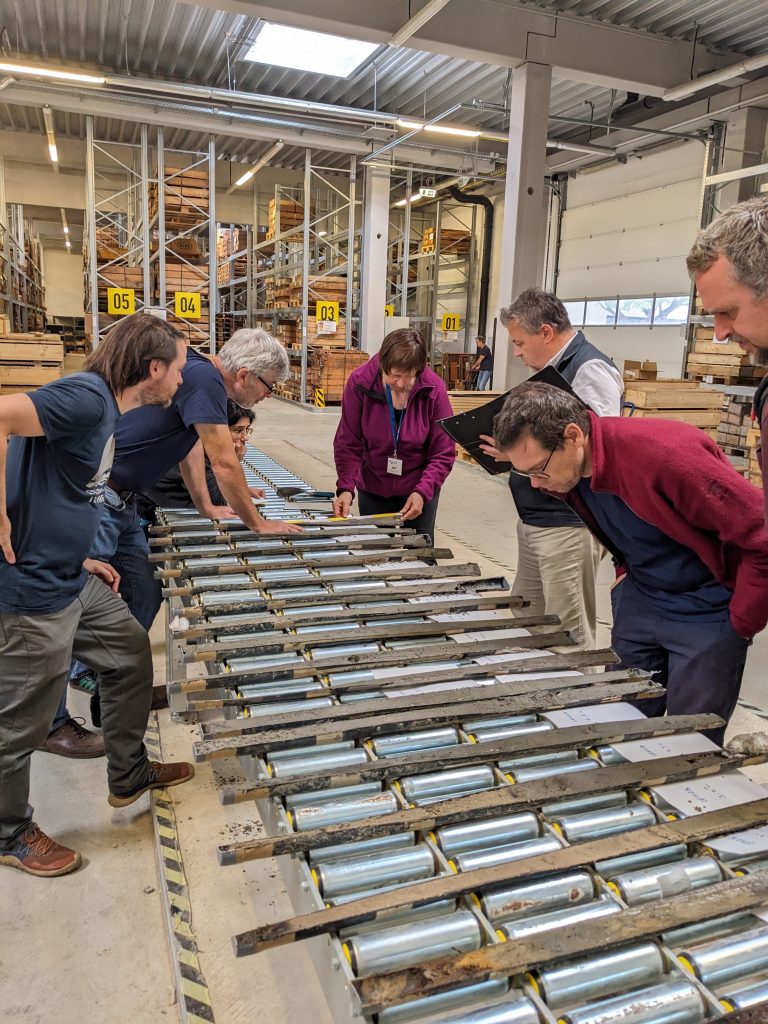Coring-Party Lehringen
I. Verheijen (text) & G. Di Maida (photos)
October 2025
In April 2025, a team from the University of Mainz drilled two cores of approximately 20 meters in depth near the archaeological site of Lehringen. From the excavation records from the 1950s, the approximate location of the elephant skeleton with spear was deducted. The majority of the Eemian deposits from Lehringen consisted of marl and were exploited in the first half of the 20th century as a fertilizer to improve the sandy soils in the region and make them more suitable for agriculture. The goal of the coring was to find an intact Eemian sedimentary succession, as close to the location of the elephant as possible. Through a combination of shear-wave seismic and geo-electric profiling in the area of the former quarry, it was attempted to locate these Eemian lake sediments, and with this information, choose the right position for the two cores.

On the 11th of September, the cores were opened at the LIAG Institute of Applied Geophysics (LIAG) in Hanover for analysis. The cores were cut in half and first opened under red light so that samples could be taken for OSL dating. On the following day, the cored sediments were described. . From this first inspection, it was likely that the Eemian interglacial sediments we were hoping for, were not present in the core. No clear marl or peat deposits that could be linked to the interglacial, were detectable. Instead, all material present in the core is probably younger and Weichselian in age. Samples were taken from the drillcore for geochronological analyses to derive the age of the sediments. To be able to find an intact Eemian succession near the archeological site of Lehringen, further prospection and coring should be employed, although it might still be challenging to find a similar succession as it was observed in the 1950s.
In a joint project of the Leibniz University Hannover (LUH) and the LIAG that is funded by the German Research Foundation (DFG), the near-surface geology of the Lehringen site is currently under investigation. This project aims to better understand the controlling factors for the evolution of the Lehringen Basin and the related archaeological site.
